A network engineer is configuring a router to send multicast traffic for the 239.10.10.10 group. Which configuration must an engineer apply to the router to implement IGMP and forward the traffic?
A.
B.
C.
D.
D
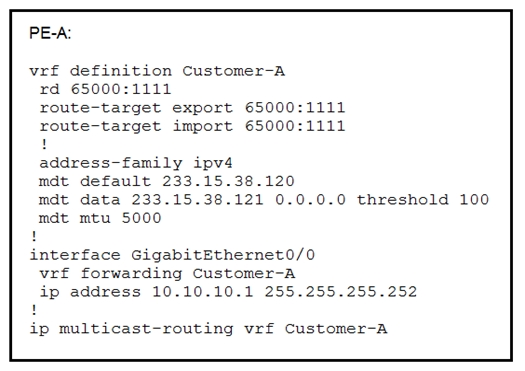
Refer to the exhibit. An engineer is implementing Auto-RP and reviewing the configuration of the PE-A. Which configuration permits Auto-RP messages to be forwarded over this interface?
D

Refer to the exhibit. A network operator must configure CSR1 interfaces GigabitEthernet2 and GigabitEthernet3 to rewrite VLAN tags 12 and 21 for traffic between
R1 and R2, respectively. Which configuration accomplishes this task?
A.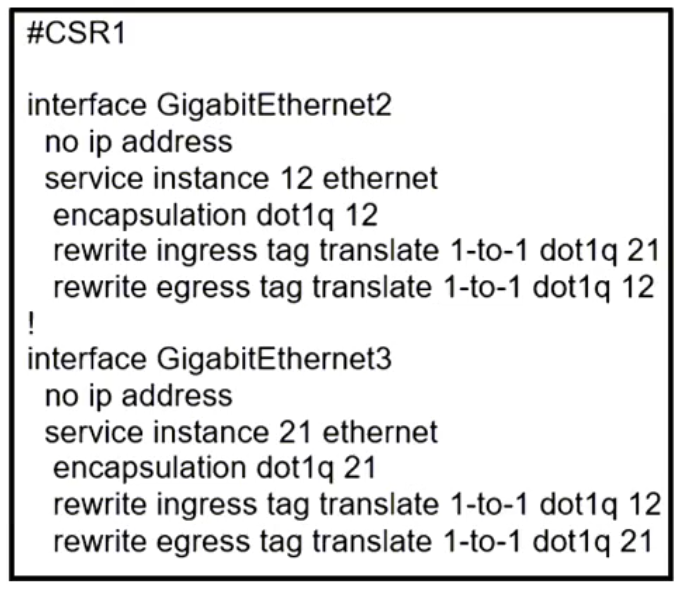
B.
C.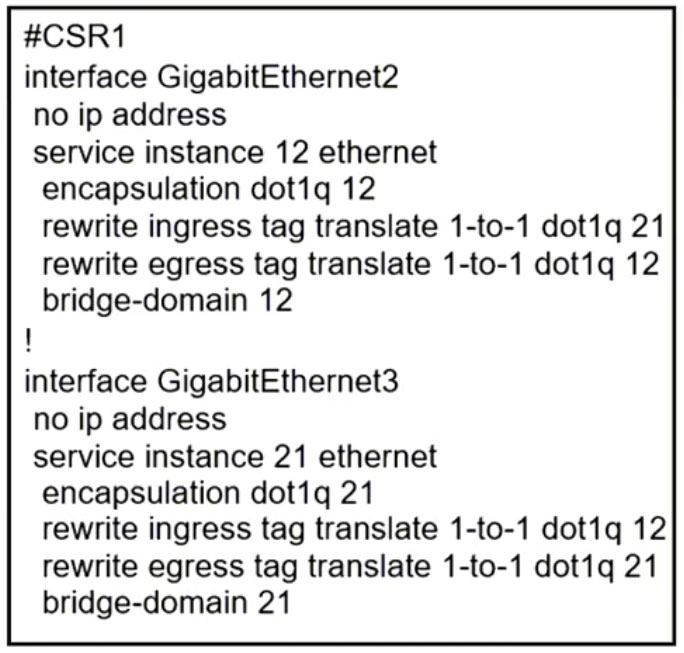
D.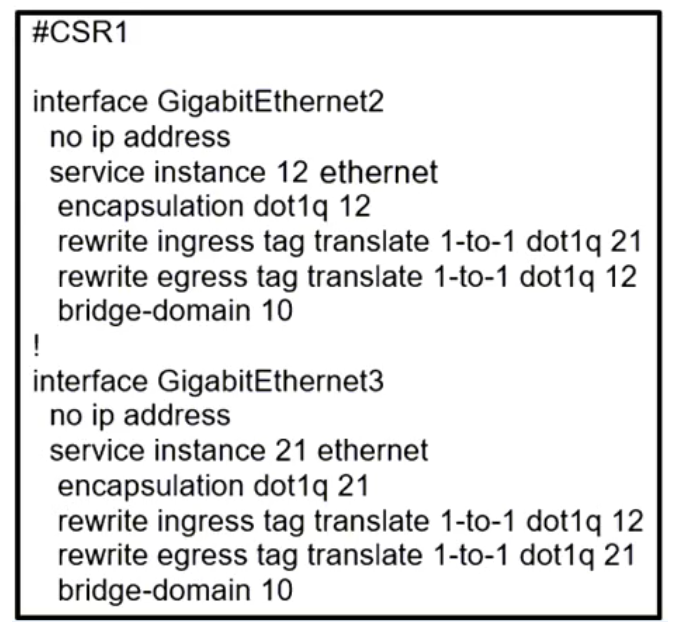
D
An engineer needs to implement QOS mechanism on customer's network as some applications going over the Internet are slower than others. Which two actions must the engineer perform when implementing traffic shaping on the network in order to accomplish this task? (Choose two.)
BC
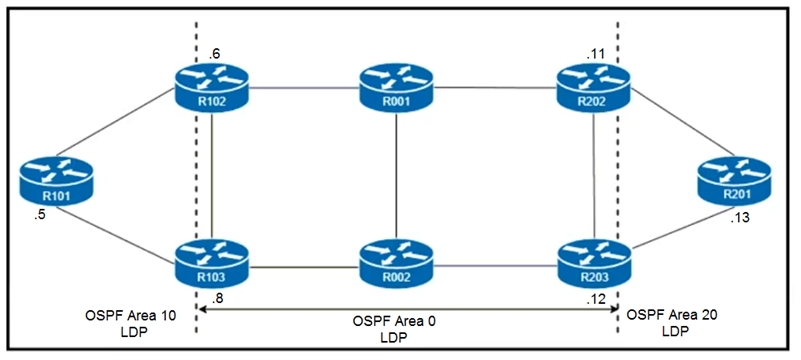
Refer to the exhibit. R101 is peering with R102 and R103, and R201 is peering with R202 and R203 using iBGP Labeled Unicast address families. The OSPF area 0 border routers are in a full iBGP Labeled Unicast mesh, and VPNv4 routes are exchanged directly between PE routers R101 and R201 through iBGP.
Which address family-level configuration must be applied on ABR R102 on ABR R102 to support a Unified MPLS routing architecture with partitioned IGP domains?
A.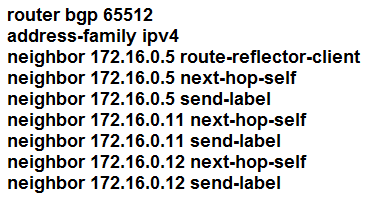
B.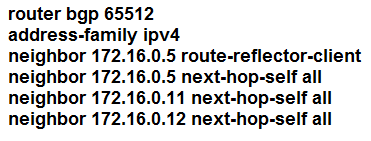
C.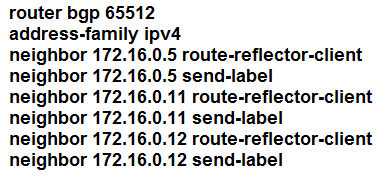
D.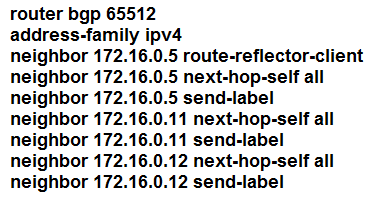
D
BGP has been implemented on an IOS XR router. Which configuration sends BGP IPv4 labels to build inter-domain LSPs?
A.
B.
C.
D.
C

Refer to the exhibit. Which statement describes the effect of this configuration?
A
A regional MPLS VPN provider operates in two regions and wants to provide MPLS L3VPN service for a customer with two sites in these separate locations. The
VPN provider approaches another organization to provide backbone carrier services so that the provider can connect to these two locations.
Which statement about this scenario is true?
B
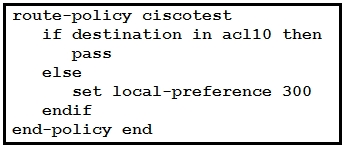
Refer to the exhibit. A network engineer is implementing a BGP routing policy. Which effect of this configuration is true?
A

Refer to the exhibit. A network engineer is implementing QoS services. Which two statements about the qos-group keyword on Cisco IOS XR are true? (Choose two.)
BD